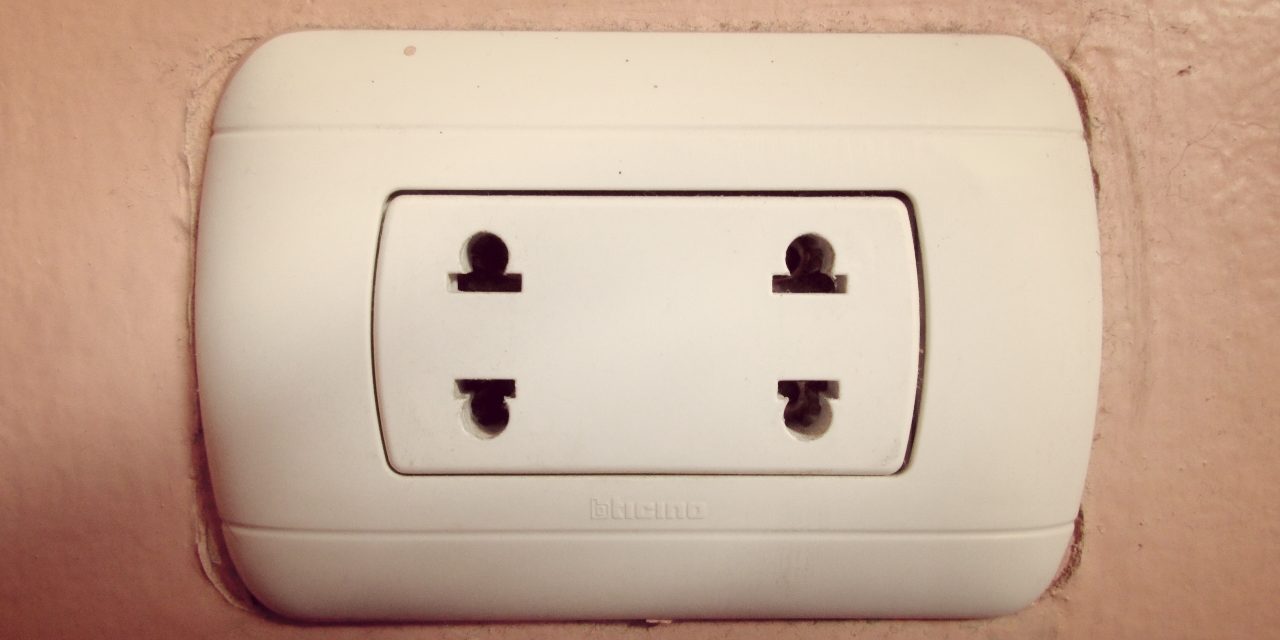The electricity in Peru, and the electrical system in general, is probably different from what you’re used to back home. The voltage, electrical outlets and plugs in Peru all offer potential differences, none of which are difficult to get around if you want to use electrical appliances — laptops, cameras, cellphones etc. — bought in a different country.
Volts
Hertz
The Electrical Supply in Peru
The electrical current in Peru is 220 volts with a standard frequency of 60 hertz.
Before plugging anything in, you need to be sure that it can take 220 Volts, or you risk damaging your appliance.
If you’re coming from the USA, for example, you need to be careful, as the USA supplies electricity between 110 and 120 volts AC. Appliances that can only take 110 volts may well start to smoke if you plug them into a 220 volt outlet.
So before you take your curling iron to Peru, check to see if it only takes 110 volts; if that’s the case, you’ll need a step-down voltage converter to use it in Peru — or just leave your curling iron at home, which would seem like the sensible thing to do. If you do decide to buy a converter, you also need to take into account the wattage of your appliance. Another consideration is the size and weight of the converter, which can be a problem if you want to travel light. Have a look at these travel voltage converters at Amazon.com for some ideas.
Alternatively, ask your hotel if they have 110-volt outlets, a feature found in many of Peru’s more upscale hotels.
If you’re coming from a country with mains voltage rated at 250 volts (between 220 and 250 volts), then your appliances should work fine in Peru (check the appliance beforehand, just in case). These countries include the UK and much of Europe, India, Australia and many African nations.
Most of the time, you’ll find that modern electrical devices and travel appliances/gadgets are designed to work at both 110 and 220 volts, in which case there’s little to worry about. Many battery chargers have dual/worldwide voltage (rated 100-250V), including iPhone chargers. If you’re bringing a laptop to Peru (or an iPad, or modern digital camera), you should be able to plug it in to the wall socket without any problems (although you might need a basic plug adapter; see below).
Electrical Outlets (Sockets) and Plugs in Peru
You’ll come across two types of plugs in Peru, with corresponding electrical outlets:
The first is the Type A plug with two flat, parallel blades. Both blades/prongs are the same shape and size, unlike the Type A plug sometimes found in the USA, which has a slightly wider end on one blade (this type of plug will not work in Peru without an adapter).


The second plug used in Peru is the Type C, a two-pin plug used in much of Europe (but not the UK).
These two plugs only work in their corresponding outlets and are not interchangeable. Sometimes you’ll only have access to one outlet type, so it always handy to have an adapter that covers both. But you’ll often find outlets that are designed to accommodate both plugs in the same wall socket (as shown in the photo of a Peruvian plug outlet at the top of this page).
Plug Adapters for Peru (and Elsewhere)
If your electrical appliance has a different plug (such as the UK or US three-prong plug), then you’ll need a plug adapter. Adapters are cheap and light, so there’s really no reason not to have one. You can buy individual plug adapters, or a universal travel adapter that will serve you well in multiple countries. You can pick these up in most airports and in major cities in Peru, although it’s best to get one before you travel. Have a look at these travel plug adapters on Amazon.com for some ideas.
The Electrical Supply and Power Outages in Peru
The electrical supply in Peru is far from perfect, especially in smaller towns and cities (and there are still some rural settlements that have no electricity).
Power outages are common, which is frustrating if you’re using a laptop and downright depressing if you’re using a desktop computer without a battery pack. If you’re staying in Peru for a while and you want to use a desktop computer, buy a UPS battery backup (Uninterruptible Power Supply) so that you don’t lose your work — and potentially damage your computer — when the power goes out. I run my computer through a UPS battery pack and a surge protector, and I consider both vital. You can buy a UPS in many computer stores in Peru for between S/ 100 and S/ 200 (about $30 to $60).






That extra layer of protection can be a wise investment, especially if you re traveling in Peru with expensive electrical equipment.